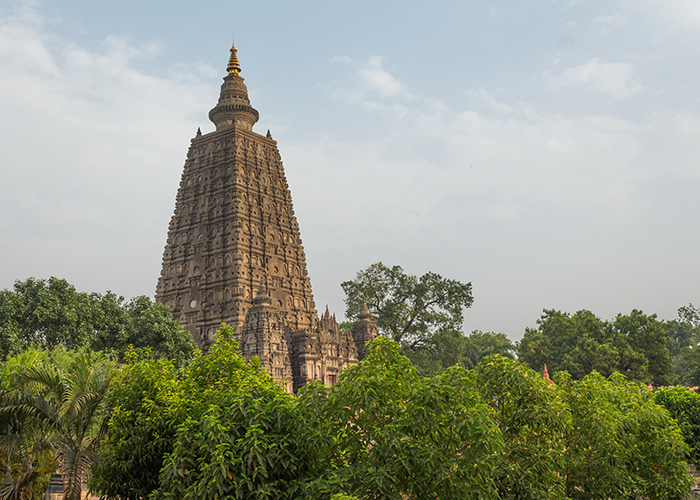 Last Stage |
Jaipur, RJ → Delhi, DH → Bodh Gaya, BH 183.7 mi (295.6 km)* |
 Next Stage |
Svāgataṃ te!
It was a long, hot drive from Jaipur to Delhi, where I bid farewell to Mr. Annu and hopped aboard an IndiGO flight for an a la carte side trip to the birthplace of Buddhism, Bodh Gaya! It was here that Siddhartha Gautama first shed his worldly attachments and attained enlightenment, and it was here, at the Bodh Gaya Regency Hotel that I learned to give up my attachments to working lighting, sealed plumbing, and clean bed sheets! But you know what? I wasn’t here to luxuriate; I was here to explore!
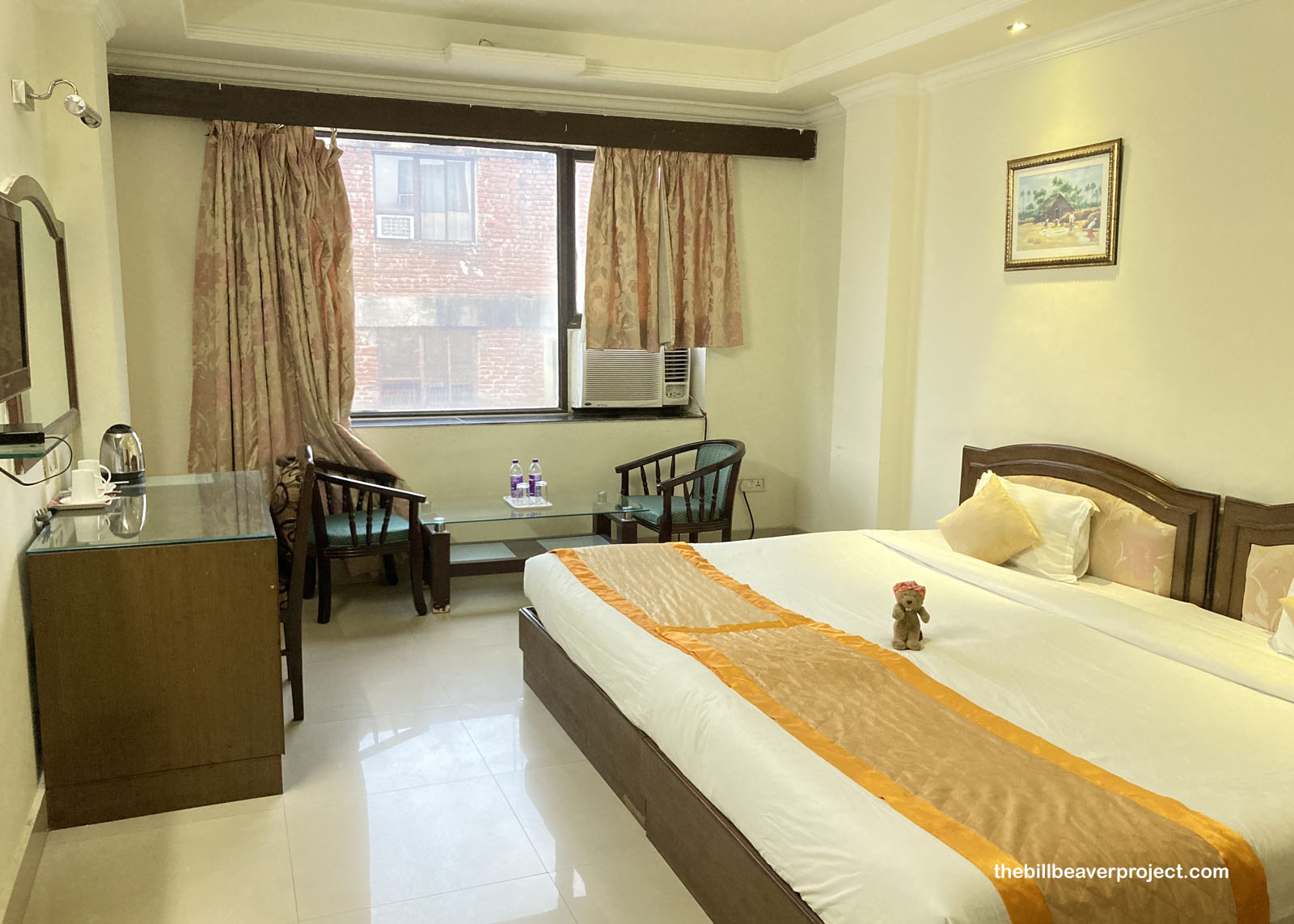 |
And there was much to see out and about, beginning with Bodh Gaya’s newest monument, the Great Buddha Statue, which was unveiled here by His Holiness, the Dalai Lama on November 18th, 1989! Designed by Vaidyanatha Ganapati Sthapati, it’s 80 feet tall and took seven years and 12,000 stonemasons to build! He’s seated atop a lotus in what’s called a dhyana mudra meditation pose and surrounded by statues of his ten main disciples! Inside the statue, accessible by staircase, are 16,300 tiny bronze images of the Buddha!
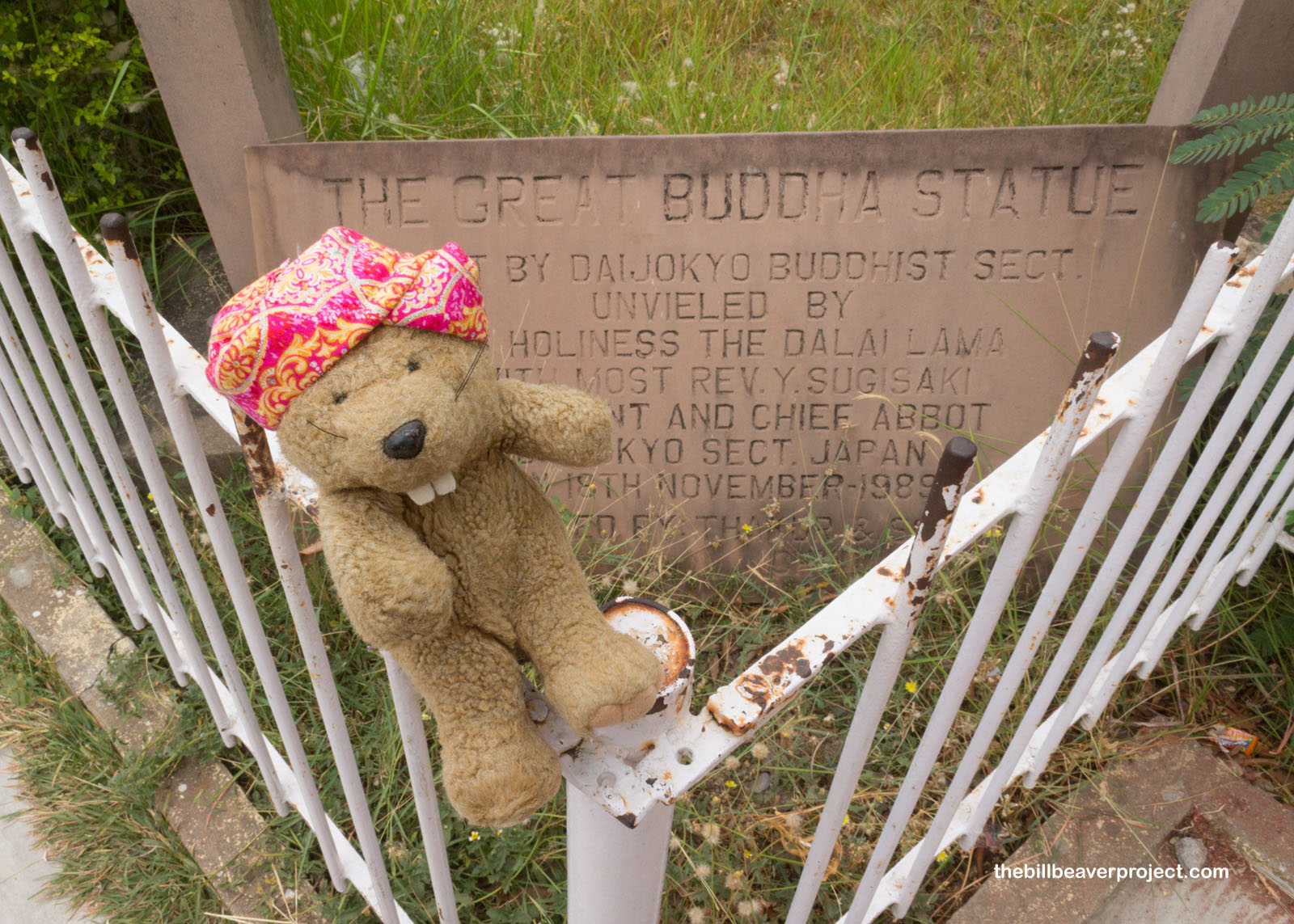 |
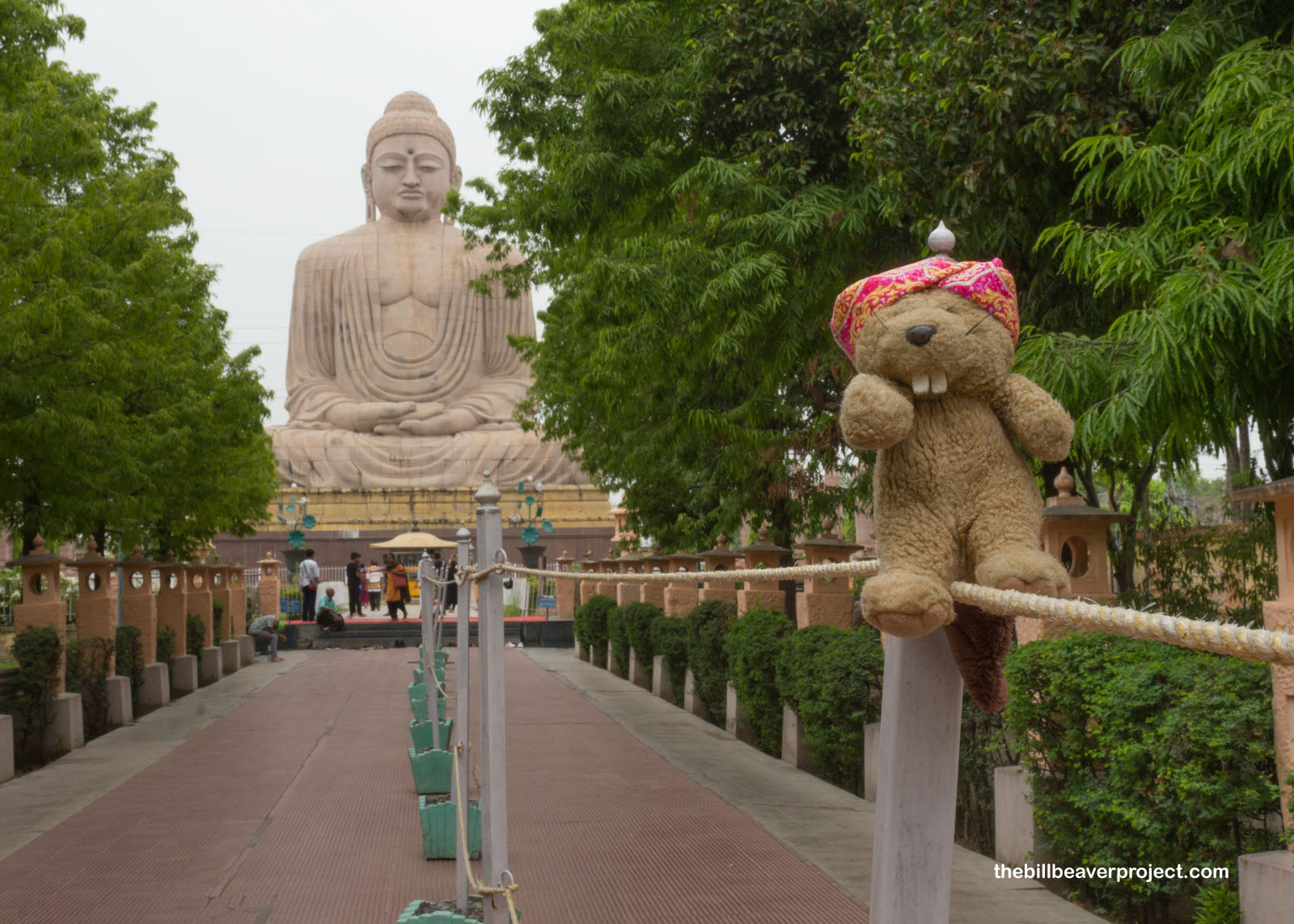 |
This is a depiction of Siddhartha Gautama, a prince born among the Shakyas, who lived in the mountains of Lumbini, Nepal, some time between 563 and 400 BCE (hard to know for sure)! Tradition holds that, at the age of 29, he abandoned his wealth and family to seek enlightenment, which brought him far to the south, to a small town called Uruvela! Now called Bodh Gaya, this town is a major site of pilgrimage for followers of the Shakya sage, or Shakyamuni, otherwise known as Lord Buddha!
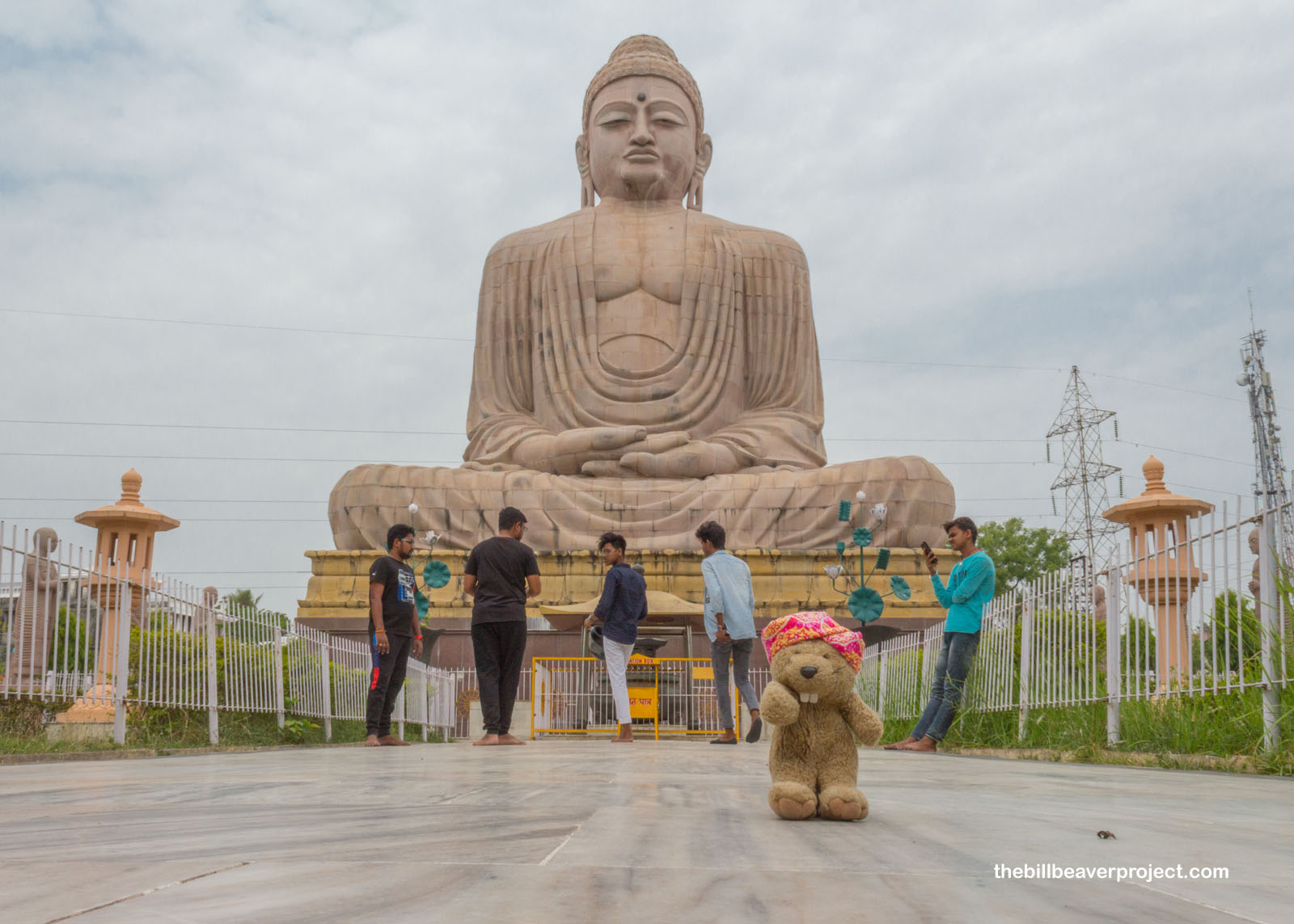 |
Buddhist organizations from all over the world have a presence here with over 37 temples in this little town! Japanese Buddhists sponsored the Great Buddha Statue and have a couple of temples here in town, like the Indosan Nipponji Japanese Temple, right next to my hotel! Built here in 1972, it’s full of paintings with a Japanese perspective to the life of the Buddha!
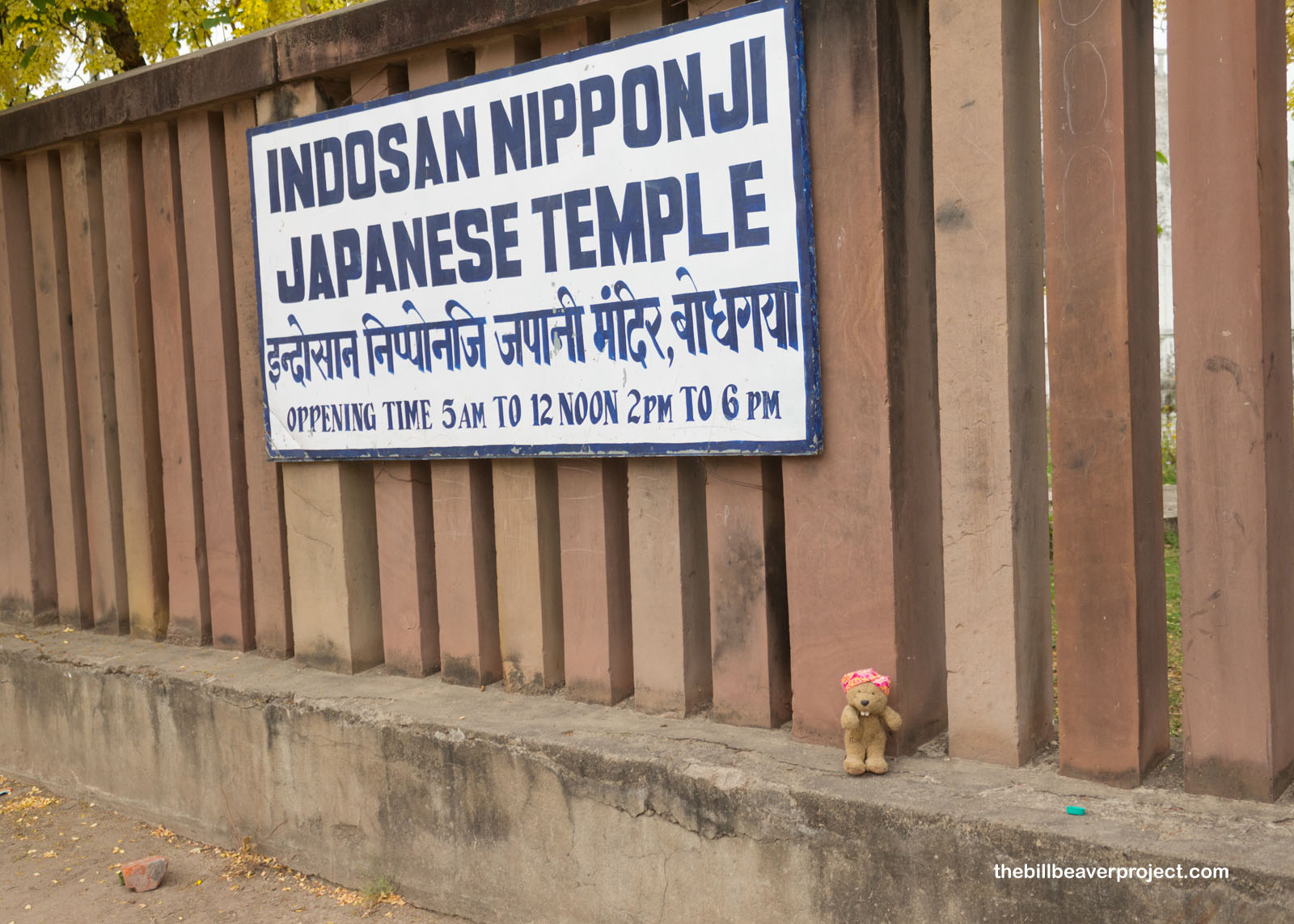 |
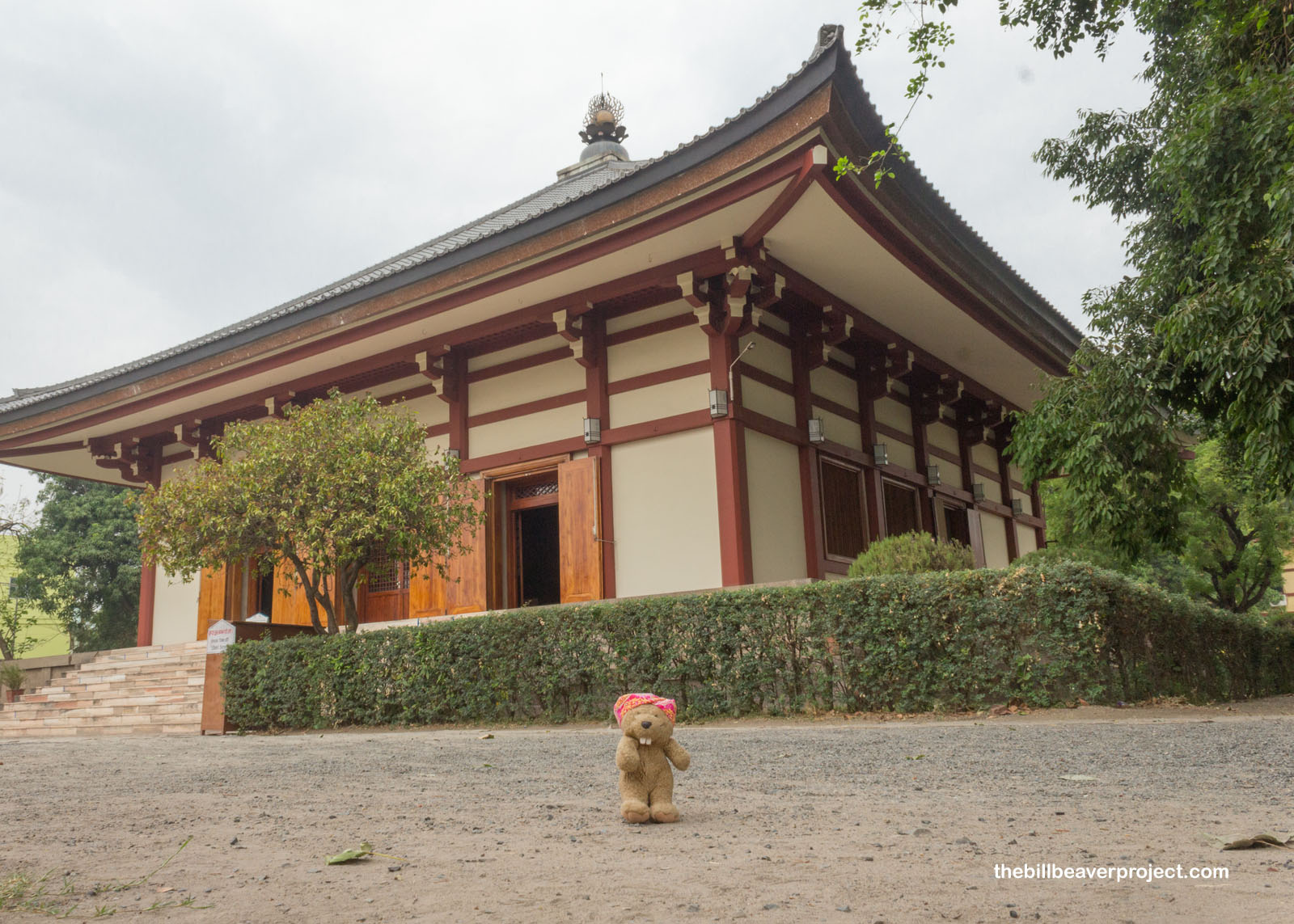 |
I wanted to visit the Wat Thai here, but it was still closed because of COVID. The Royal Bhutan Monastery was still open, though, probably because it has a guest house. I could not, for the life of me, find any information about this monastery, except that it had a 7-foot tall golden Buddha statue inside. I suspect, though, that it was built sometime during the reign of Bhutan’s third dragon king, Jigme Dorji Wangchuck, who ended Bhutan’s long isolation, building ties with the newly independent India, recognizing the independence of Bangladesh, and joining the United Nations in 1971!
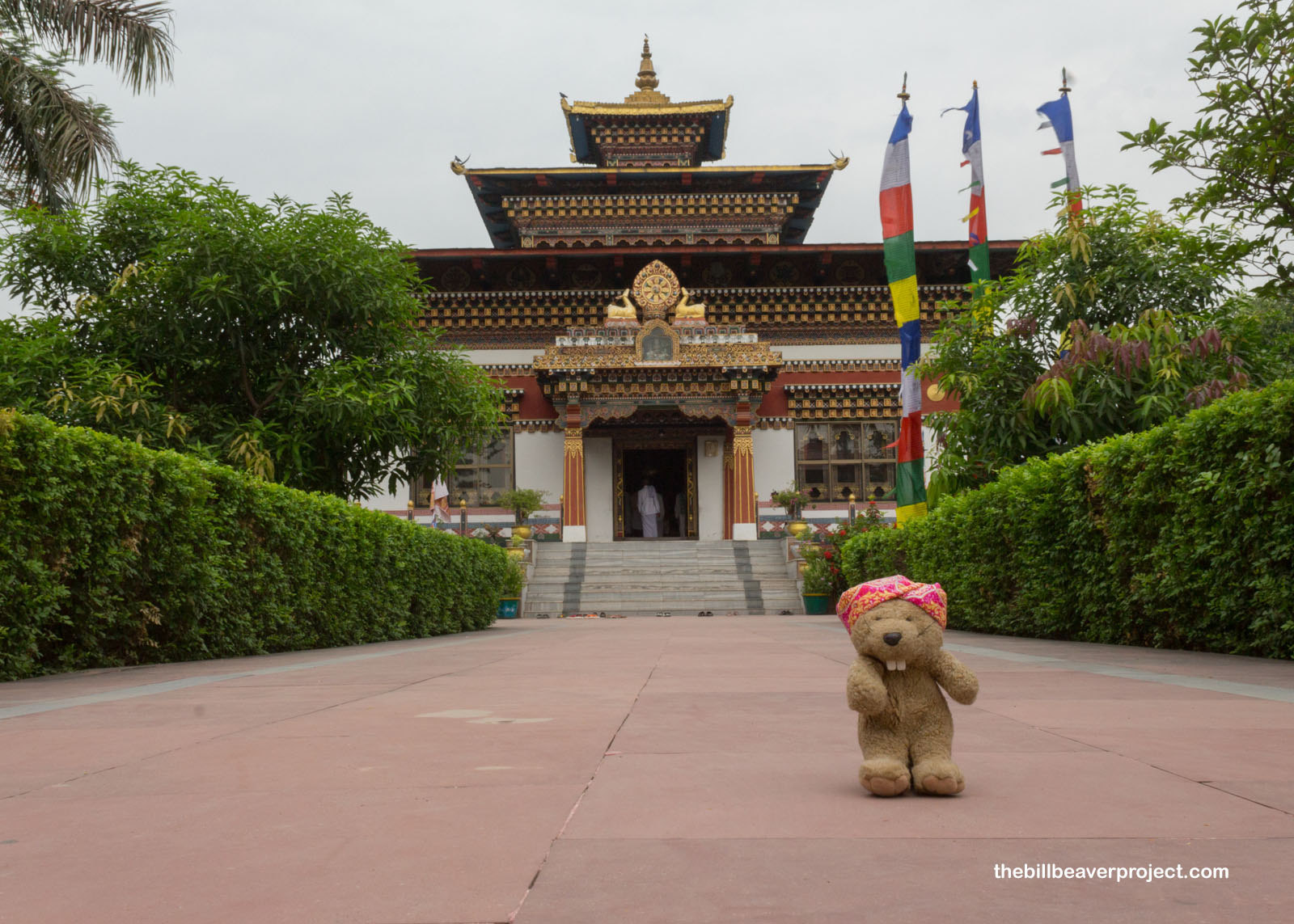 |
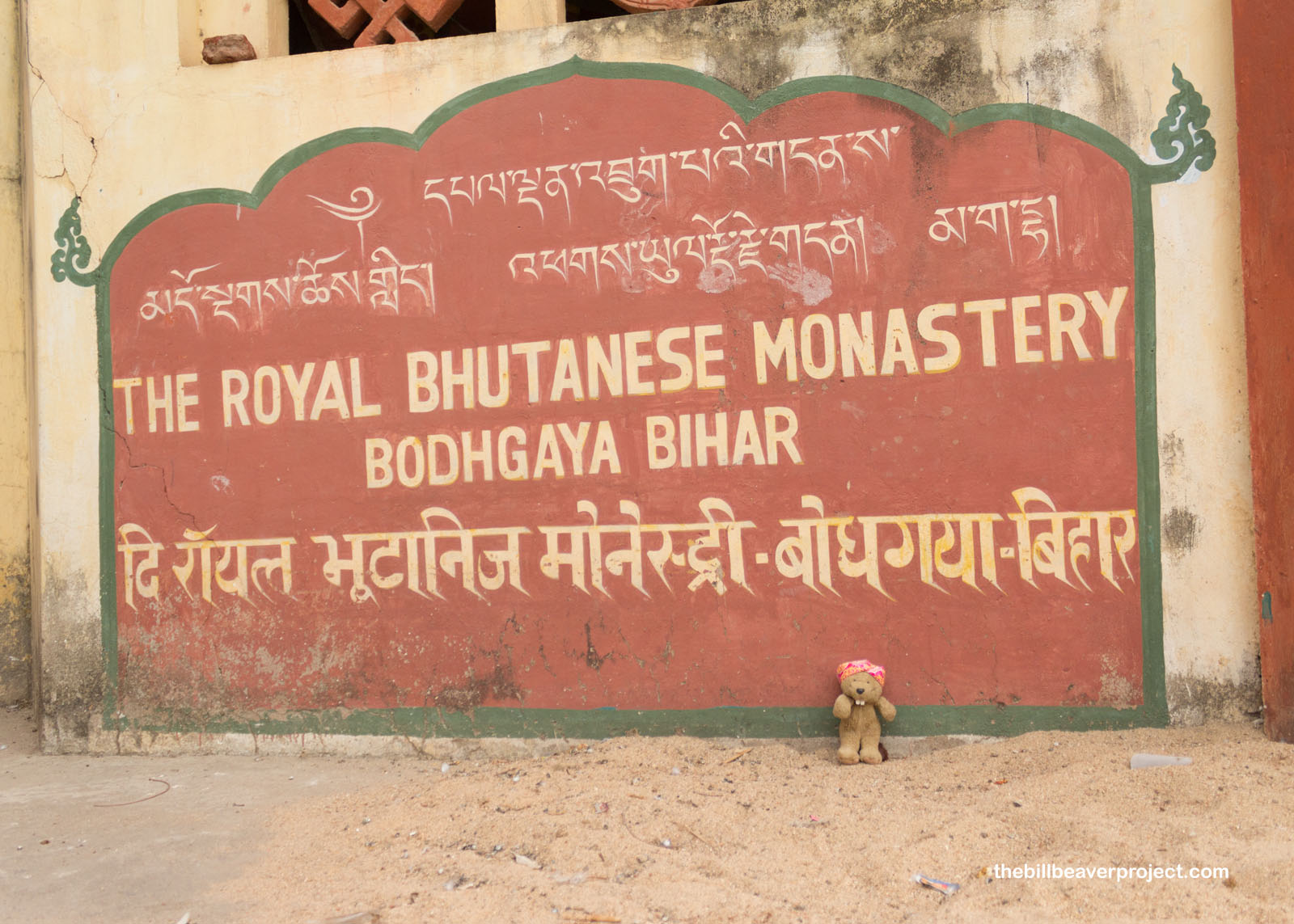 |
But these temples, while beautiful and holy in their own right, are not why folks come all the way to Bodh Gaya. The main draw of the town formerly known as Uruvela is the UNESCO-recognized Mahabodhi Temple Complex! To get inside was almost as complicated as the Taj Mahal, but apart from having to leave bags and phones in a cloak room outside, there were no rules against beavers entering the site of enlightenment!
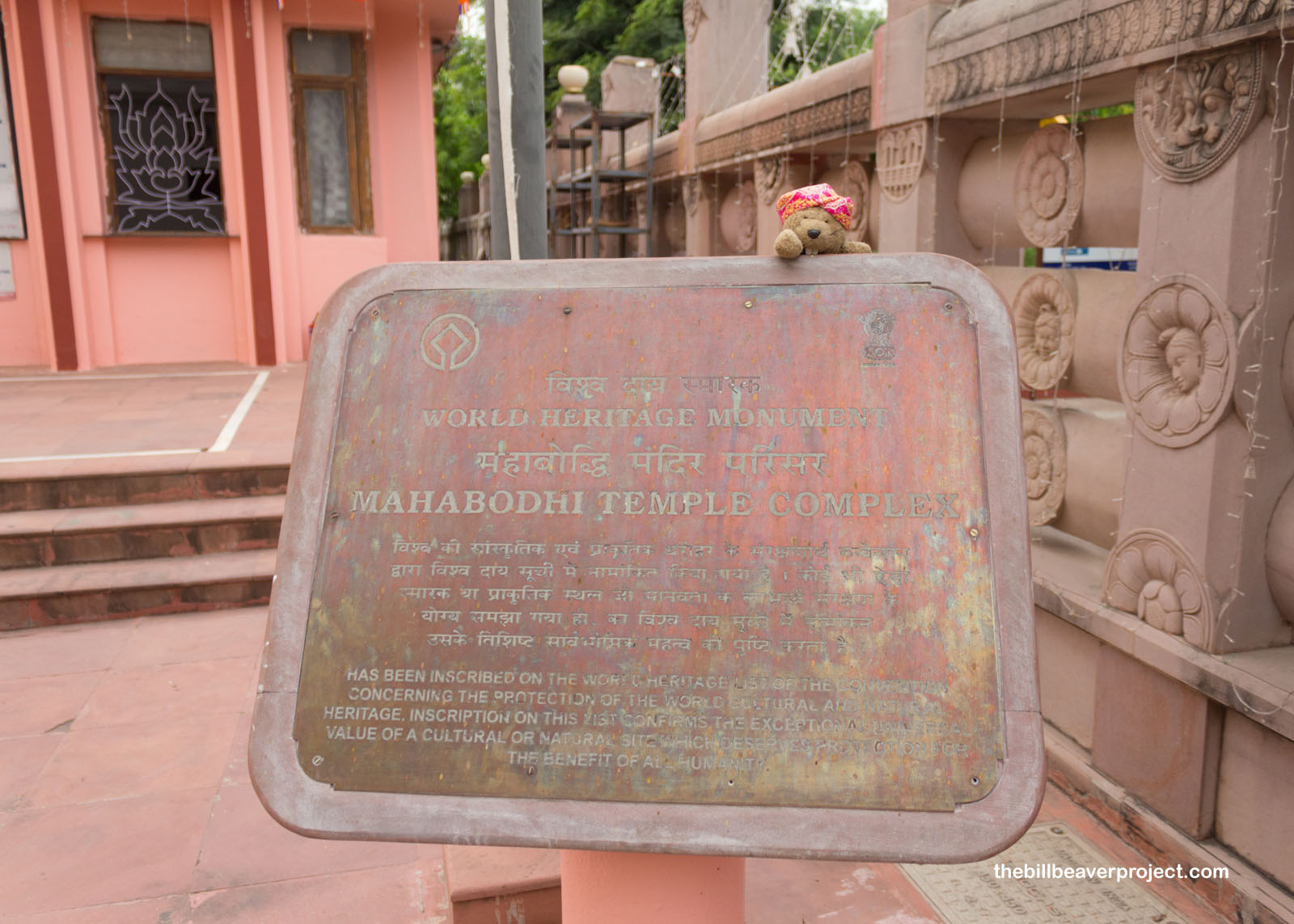 |
And what a site it was! The temple is one of the oldest surviving brick buildings in India! The whole complex was still streaming with flags from last Monday’s celebration of Vesak, or Buddha Jayanti, a public holiday celebrating the Buddha’s birthday! The clouds kept it from being too hot, which seemed like a great morning to commune with this special place. There was just one catch. When you’re a beaver in India, you attract attention, and Raviranjan of the Bihar Department of Tourism, actually fended off another tour guide to stake a claim to showing me around! I figured I might as well learn a little more about this place from a pro, but I had hoped to do some meditating myself.
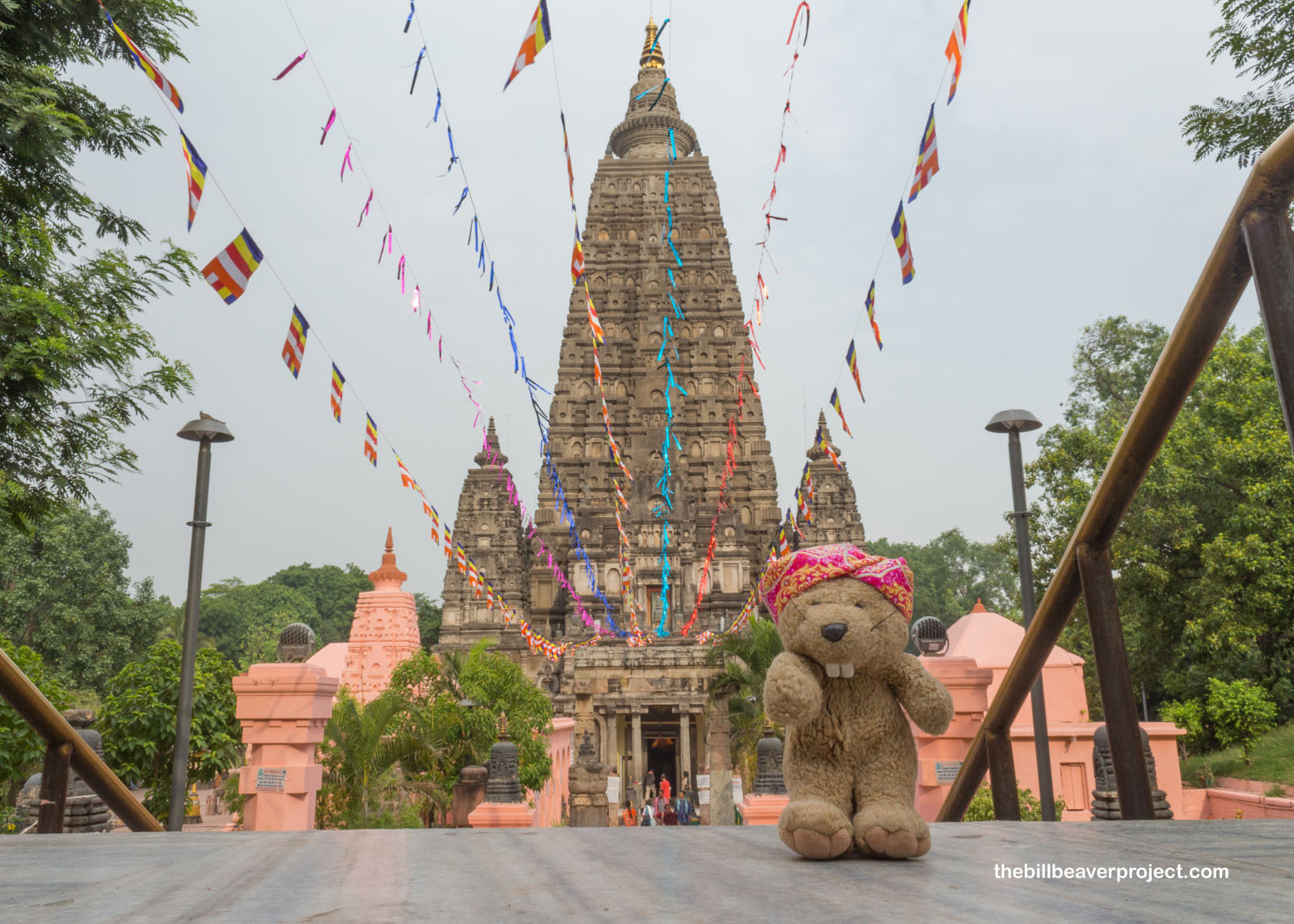 |
Raviranjan led me first to Mucalinda Lake. Mucalinda was the king of the nagas, or snakes, and was rumored to live in this lake. In the sixth week of the Buddha’s meditations here, back when this was mostly forest, there was a huge storm! Rather than watch the Buddha get soaked and battered with branches, the mighty cobra king shielded him with his hood, enabling him to complete his sixth week of meditation!
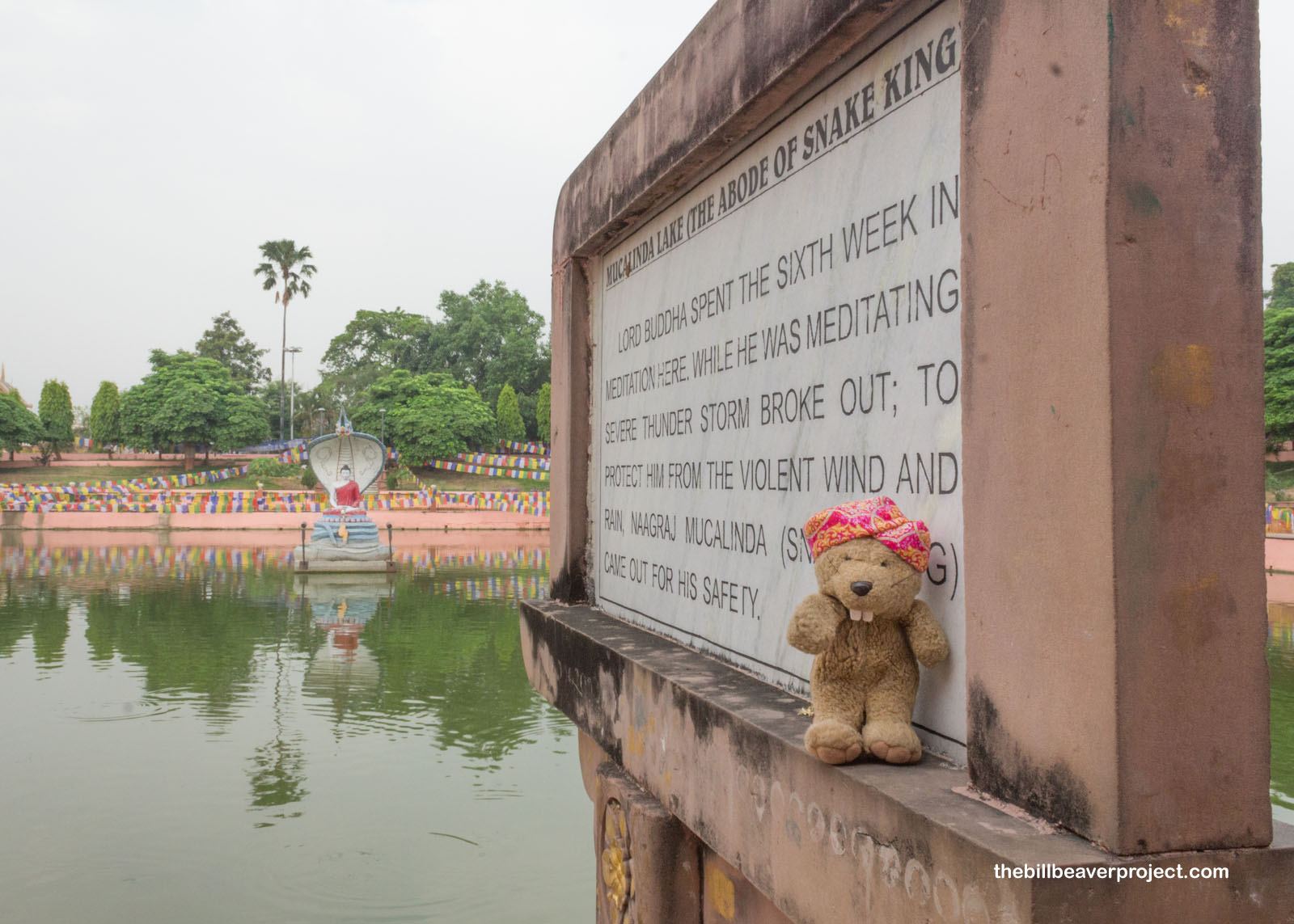 |
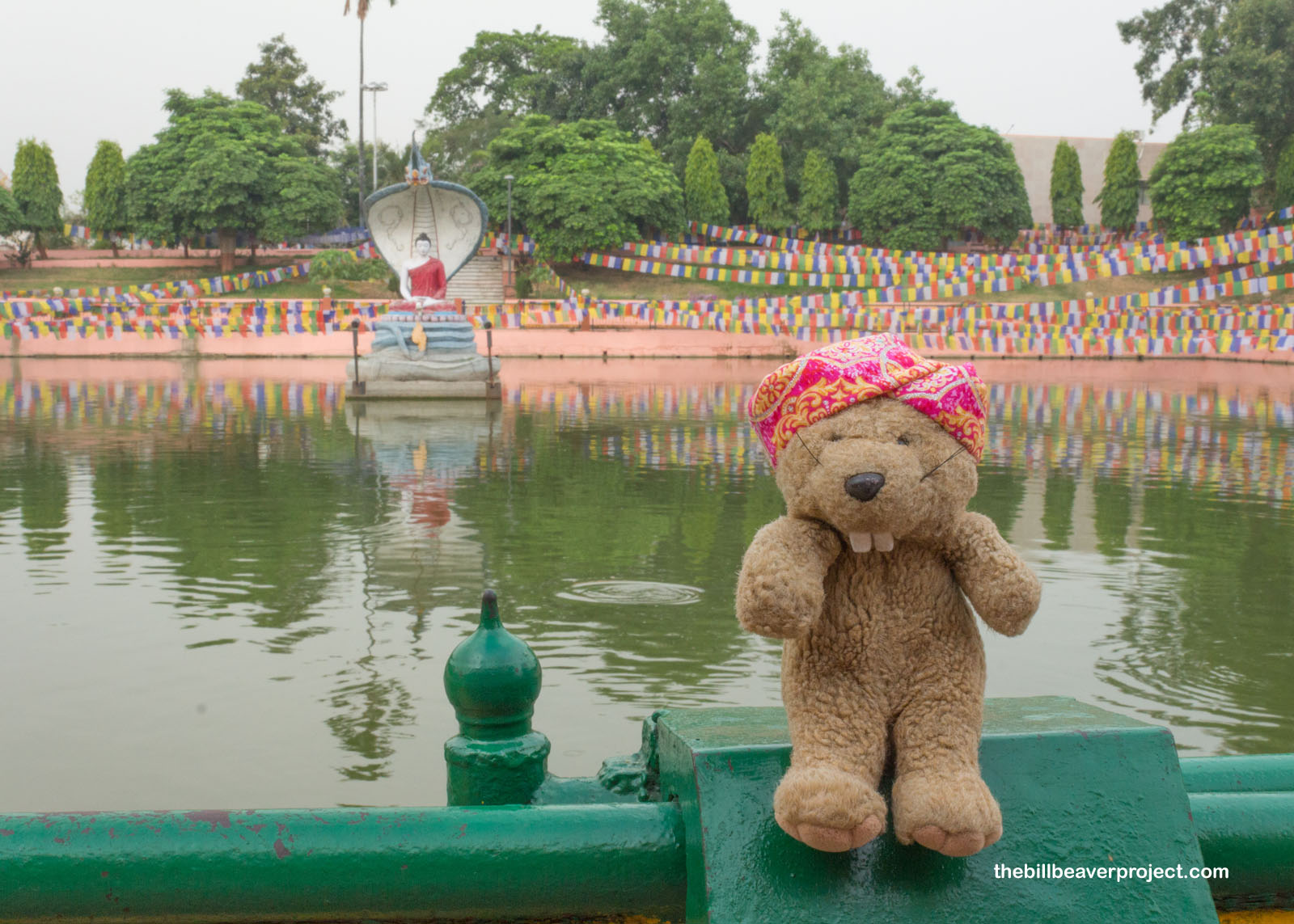 |
Then we passed by the complex’s newest addition, a wall of panels detailing the history the Mahabodhi Temple itself. While we don’t know for sure when the Buddha sat here, we do know that it was the Mauryan emperor, Aśoka the Great, who built the first temple complex here around 250 BCE. He’d been so upset by the bloodshed of the Kalinga War that he converted to Buddhism and is credited with ordering 84,000 stupas and monasteries to be built across India! That temple did fall to ruin, but the Gupta Empire built this current temple upon Aśoka’s, over 700 years later!
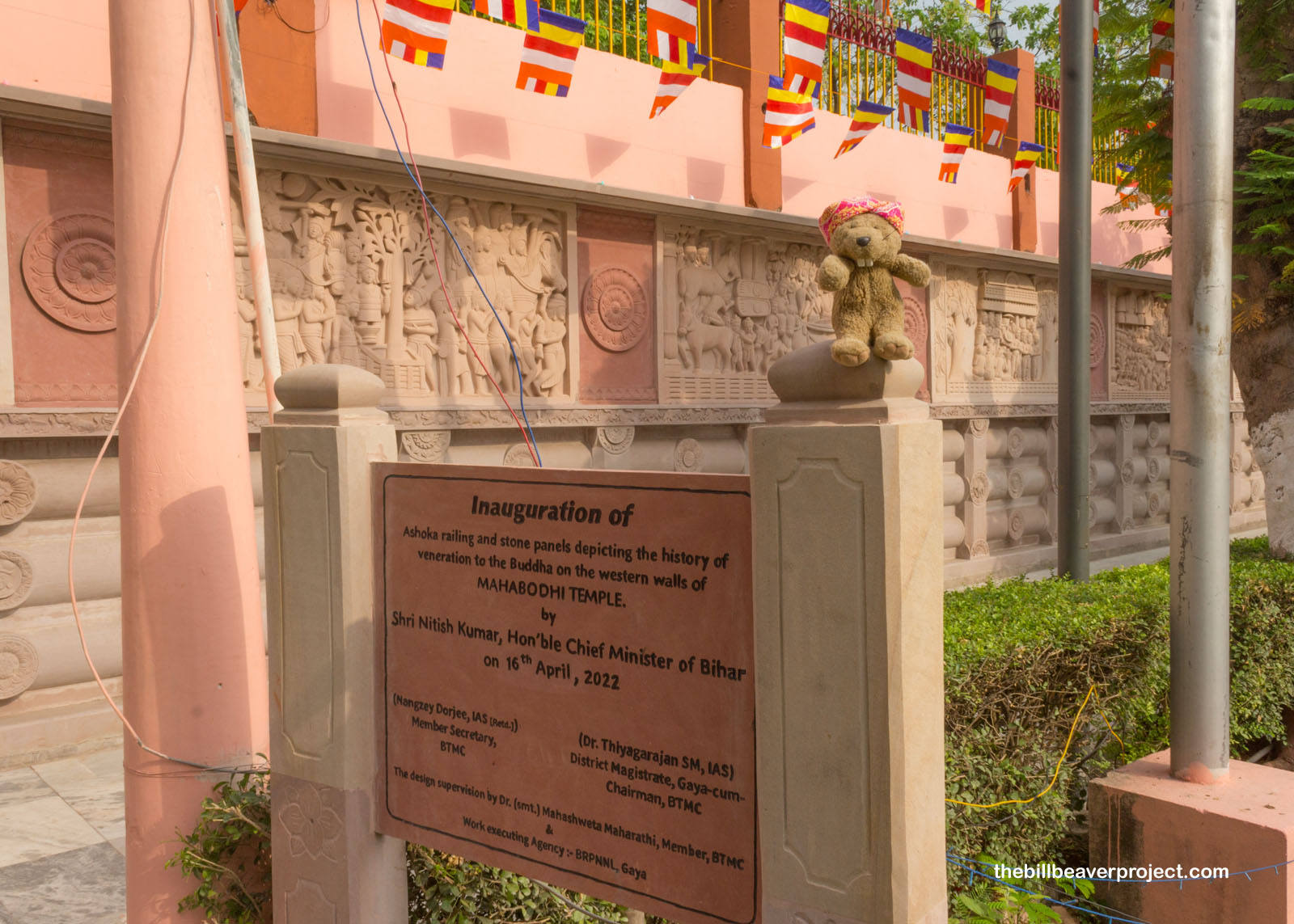 |
From there, Buddhism spread far out of India, into China, Thailand, Japan, and beyond, but in its country of origin, Islamic and Hindu conquests made the religion of the Middle Way almost extinct! Though Hindus believed Buddha to be the 9th incarnation of Vishnu, practicing Buddhists were not allowed to worship here while it was a Hindu shrine. Though the British government supported restoring the temple, as of today, the Mahabodhi Temple complex is owned by the state government of Bihar and run by a council of nine. Originally, the Bodh Gaya Temple Act of 1949 said there had to be 4 Buddhists and 5 Hindus on this 9-person council, but that changed to allow a Buddhist majority as recently as 2013!
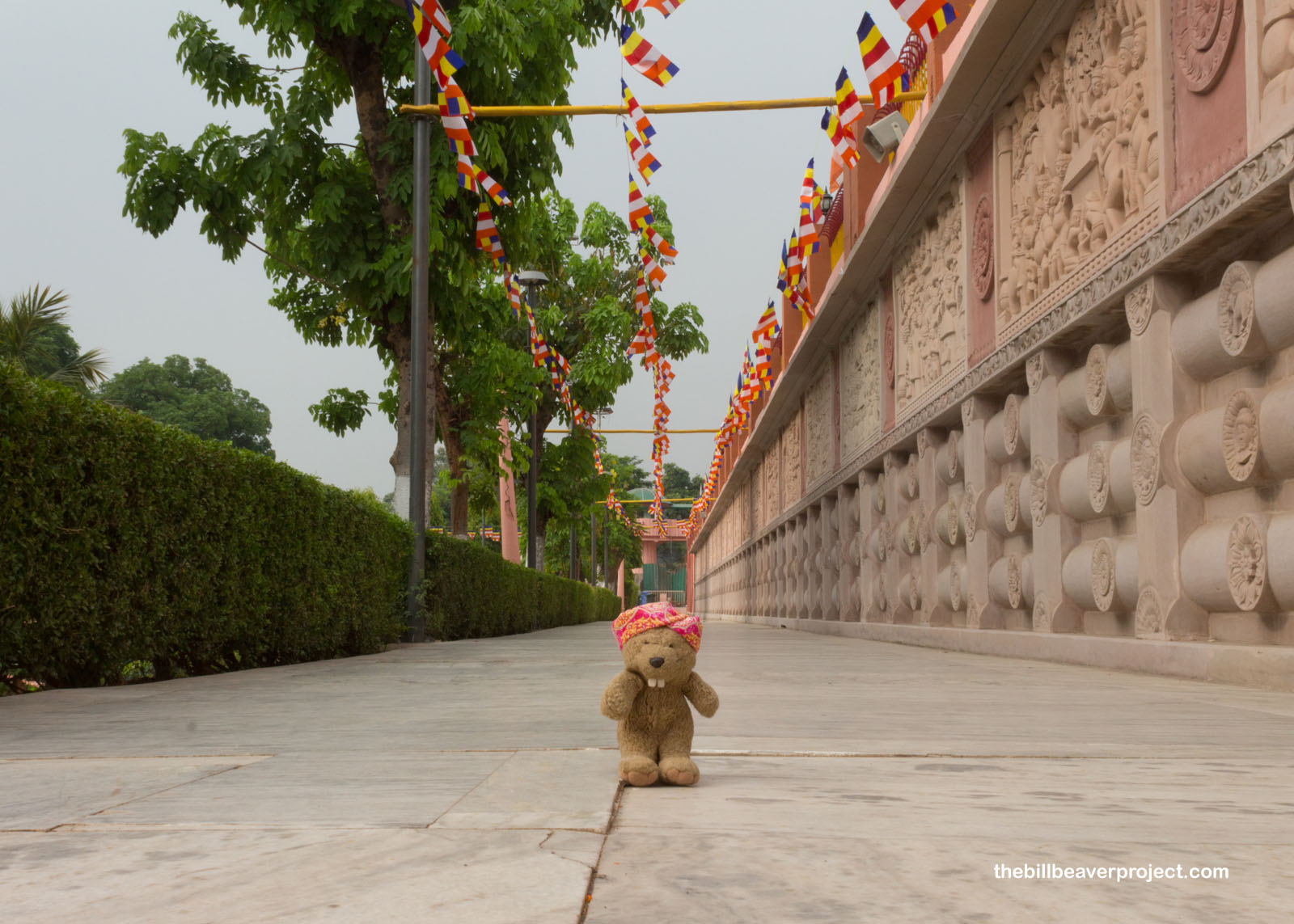 |
The same year Buddhists could have a majority on the council, King Bhumibol of Thailand donated a golden crown for the top of the temple! Previous crowns that had fallen or been damaged, were still on display among the stupas surrounding the main temple!
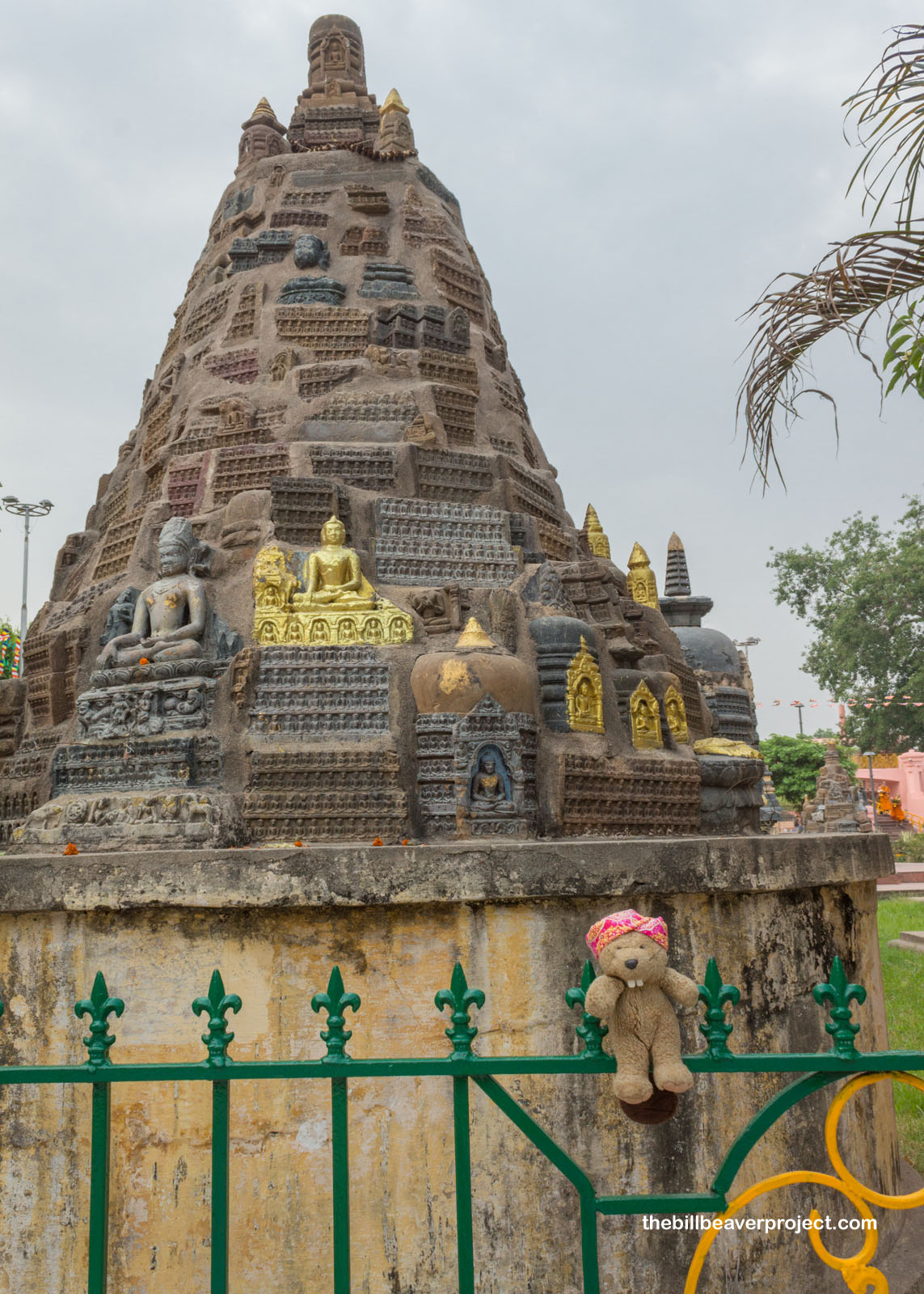 |
There were also two giant stone footprints, or Padas, which date back to Aśoka’s time! Like stupas and monasteries, the Mauryan emperor ordered these Buddhapadas installed all over the empire. In fact, I saw some in Cambodia back in 2017)! They show up in places that the Buddha was said to consider important, or just to remind folks that the Buddha once walked as a human but was able to transcend!
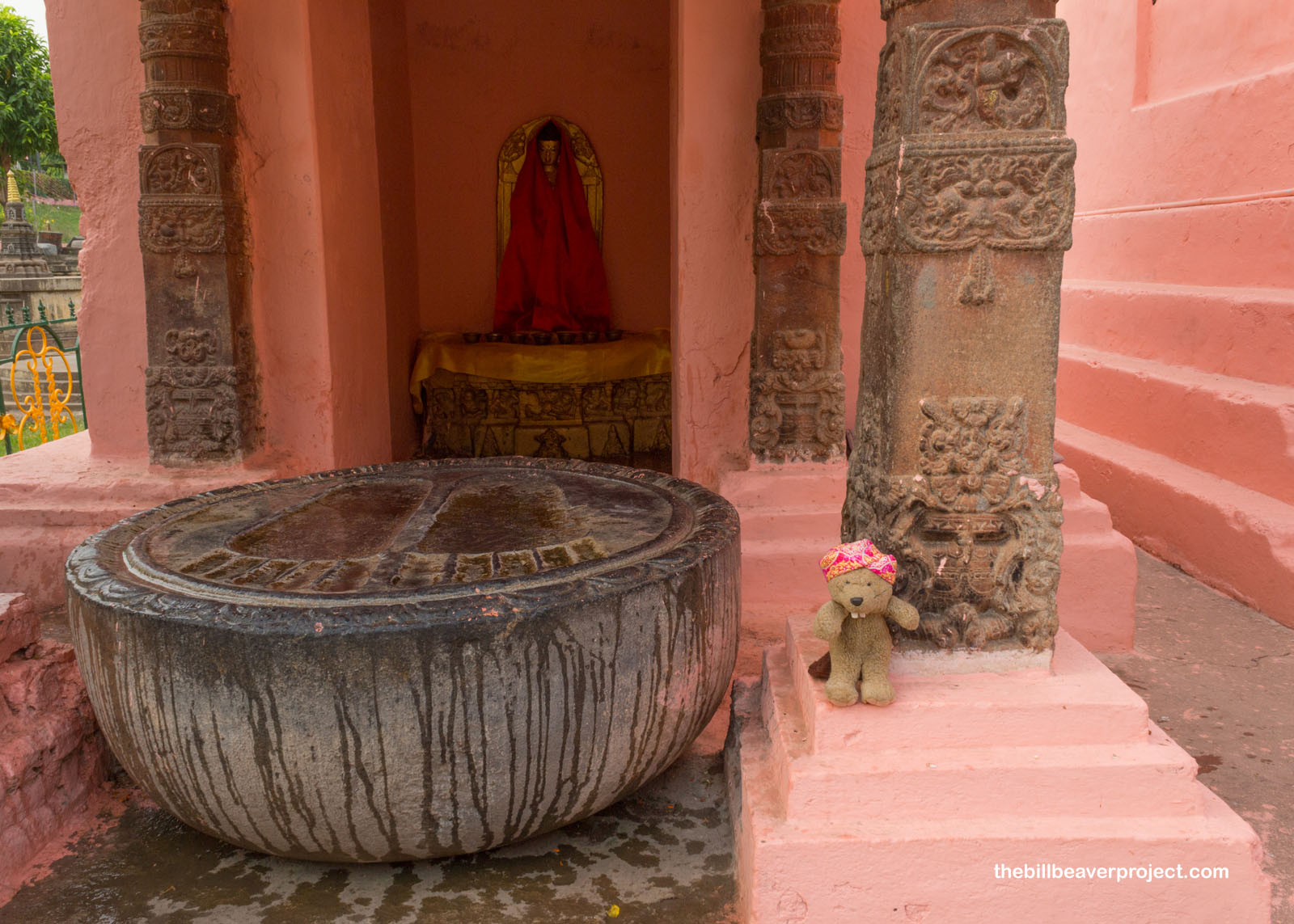 |
Raviranjan led me past the Rajayatana tree. This was the final place where the Buddha completed his seven weeks of meditations, where the deva, Sakka, brought him food and mouth rinse after 49 days without eating, drinking, or going to the bathroom! It was here that the merchant brothers, Tapussa and Bhallika, brought him rice cakes and sweets, and he gave them a lock of his hair!
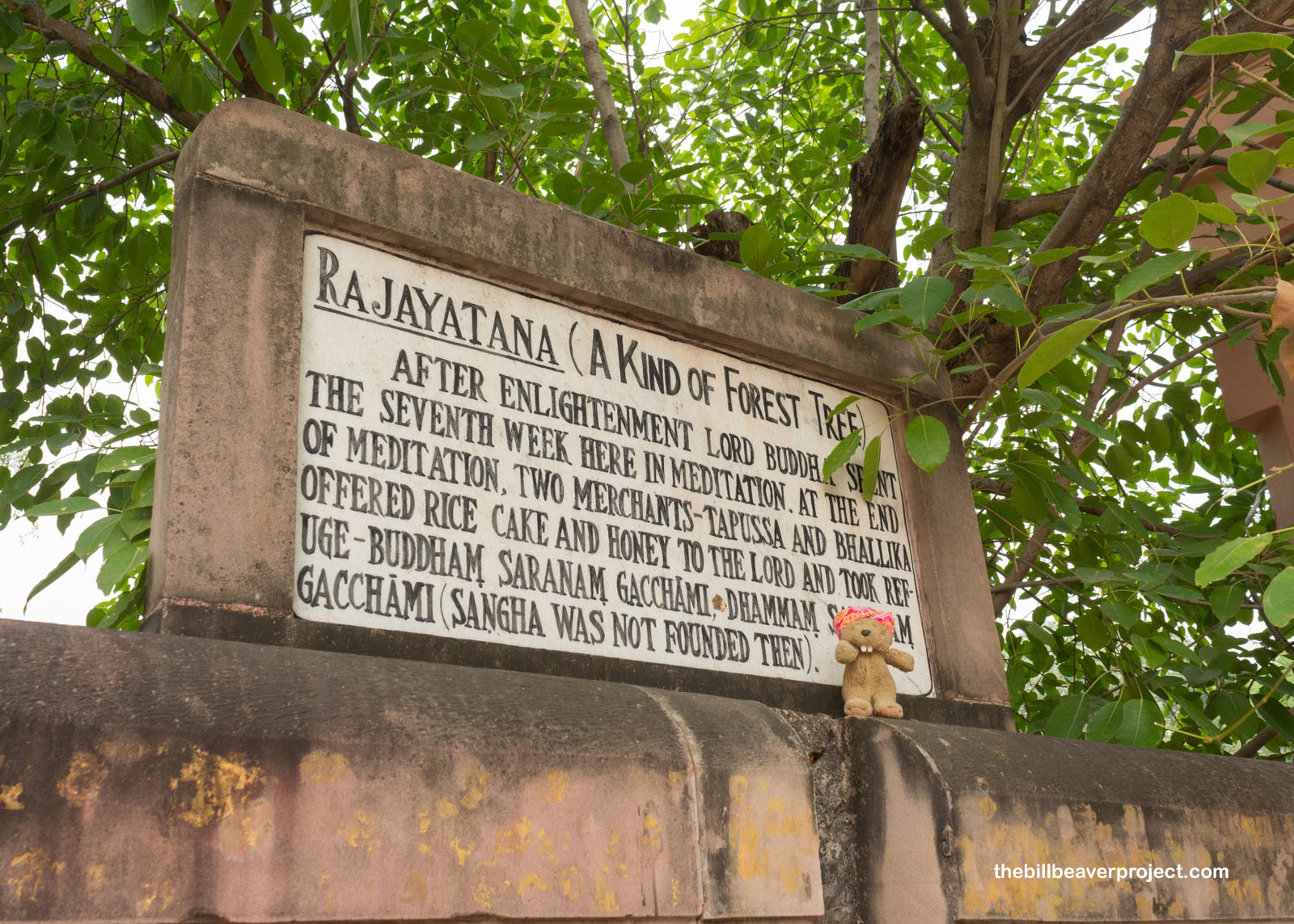 |
I’d appreciated Raviranjan’s information, but by now I was starting to get a little annoyed by how he was barging in on the monks’ meditations and getting in their way as they walked around the temple. So I left him at the entrance with a kind of half-promise that I would come back later so he could take me somewhere else. I wanted to experience the main attraction of the complex without a government tour guide, but there was no serenity to be had! Three monks decided to chat with me and ask me questions about where I was from, what I was doing, and whether we could be friends on WhatsApp! They meant well, but I couldn’t help but think of the myth of Mara tempting the Buddha from his meditation with illusions of wealth and beauty, and threats of danger!
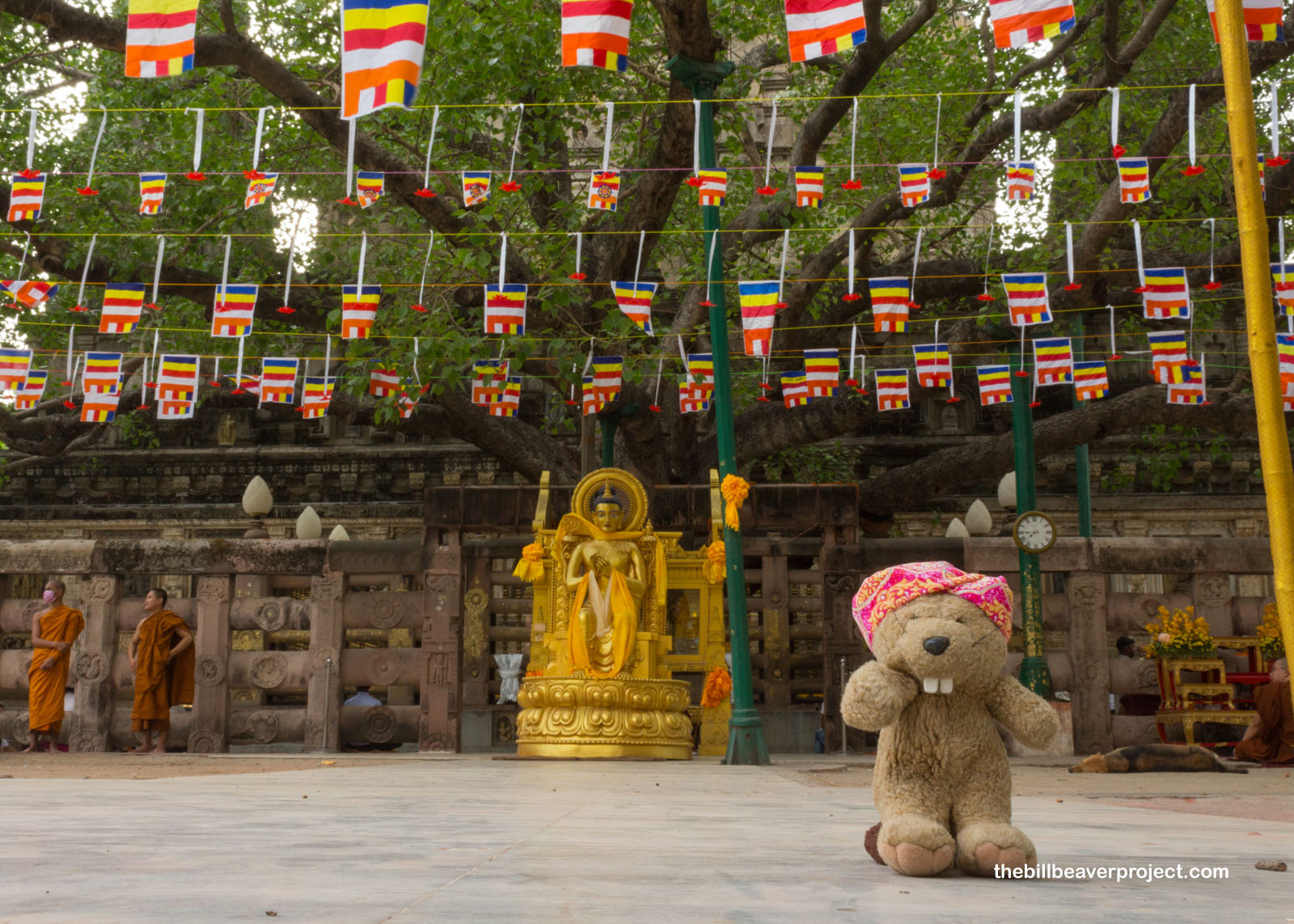 |
But the Buddha had bested Mara here, leading to his seven weeks of enlightened meditation, and I did sneak away long enough to view the Bodhi Tree up close! Technically a pipal, this tree’s ancestor shaded Siddhartha Gautama as he found enlightenment, or “bodhi” at the age of 35! Cut down many times, even by Aśoka’s wife, new Bodhi trees have been planted here, from seeds and cuttings, ever since, with saplings sent across the world, even to my own backyard in Thousand Oaks!
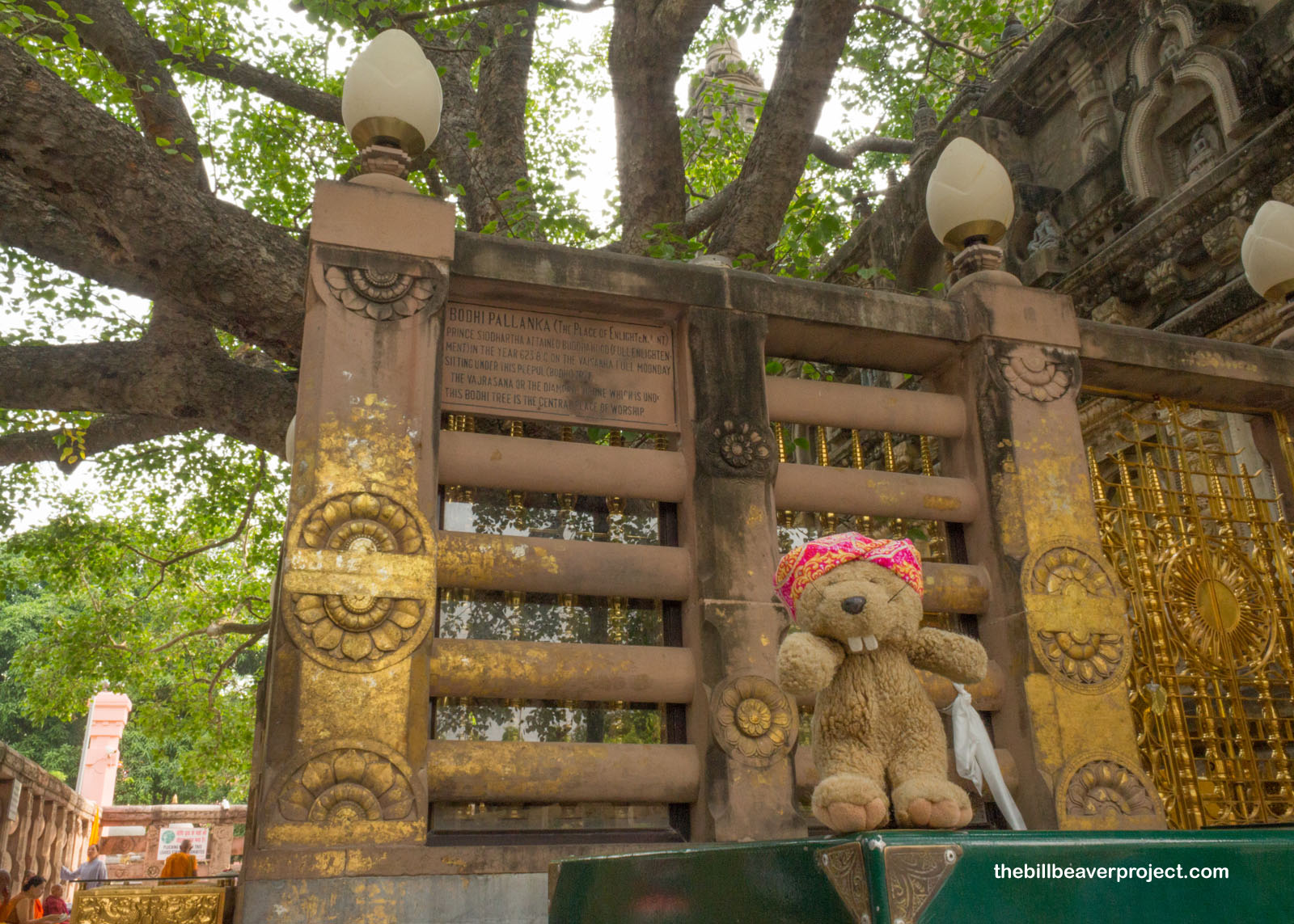 |
But I couldn’t stay here for seven weeks. IndiGO only had one daily flight between Gaya and Delhi, so I had to be going, much to the dismay of more would-be tour guides and the monks, one of whom followed me back to my hotel and tried to get me to ride with him to the airport! The hotel owner even let him into the hotel transport, which he directed to his home so he could show me his shrine! It was a really uncomfortable situation, at least by my Americanized sensibilities, but everything turned out okay in the end.
After some crazy security lines and probing questions about bubble wrap, I was back on the plane to Delhi. Tomorrow, I’ll make my final stop on my first circumnavigation, and then this grand adventure will be at an end. I sure have learned a lot on my trip to India, but I’ve barely scratched the surface of the subcontinent. Maybe I’ll be back one day, but if I do, I’ll have to take the recommendations to visit the Himalayas instead!
Subhaṃ bhavatu!

 Last Stage |
Total Ground Covered: 909.0 mi (1,462.8 km)* *Just driving! Doesn’t include flights. |
 Next Stage |
